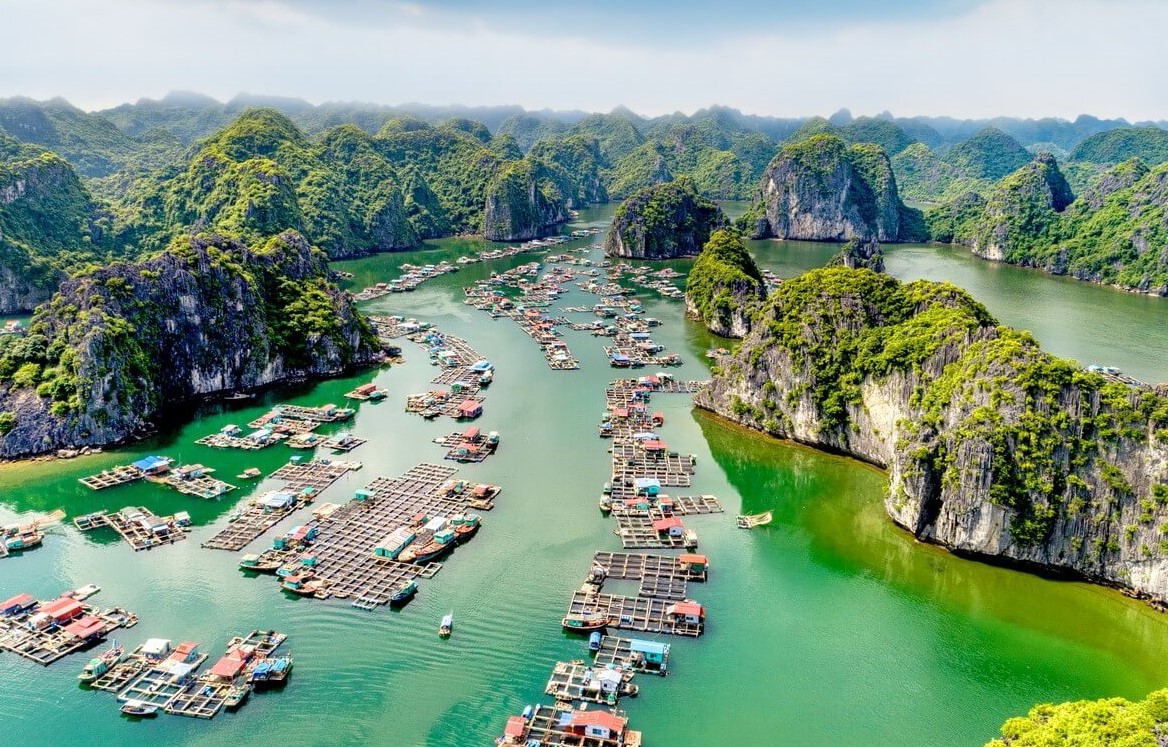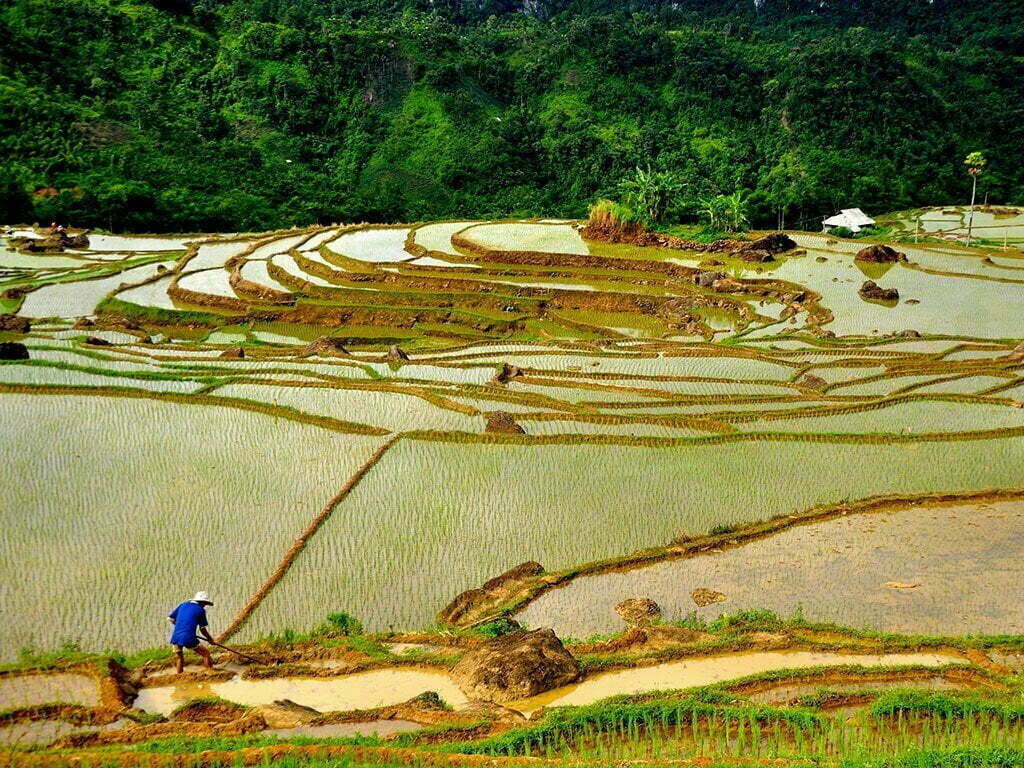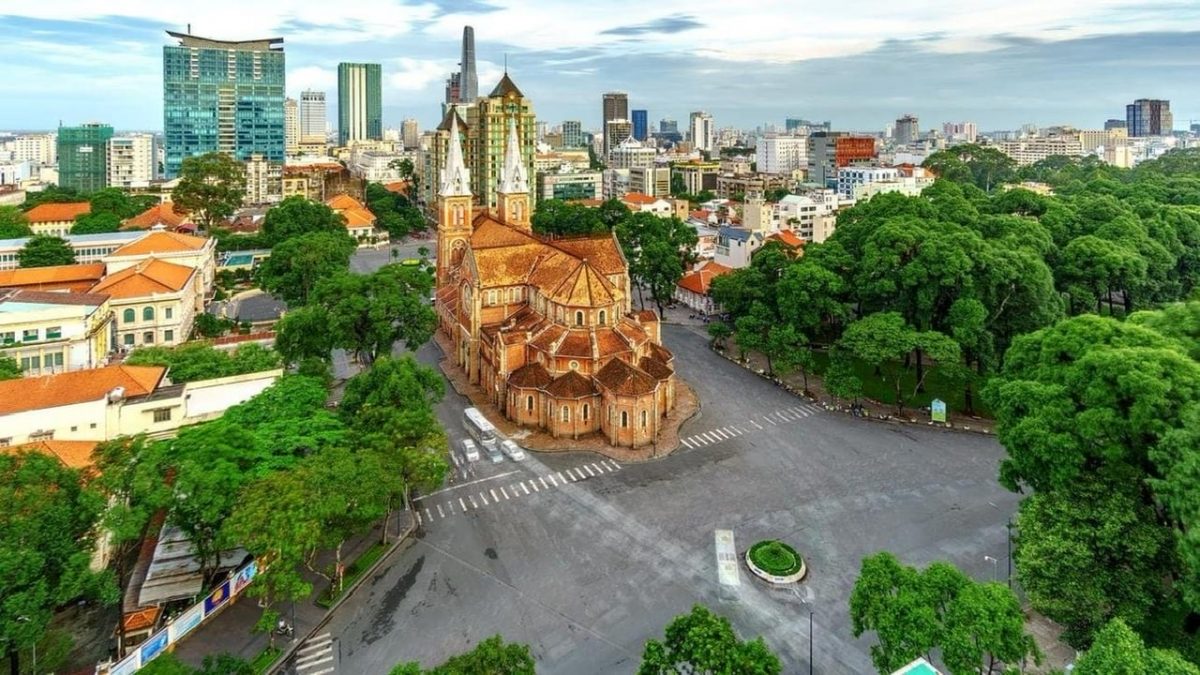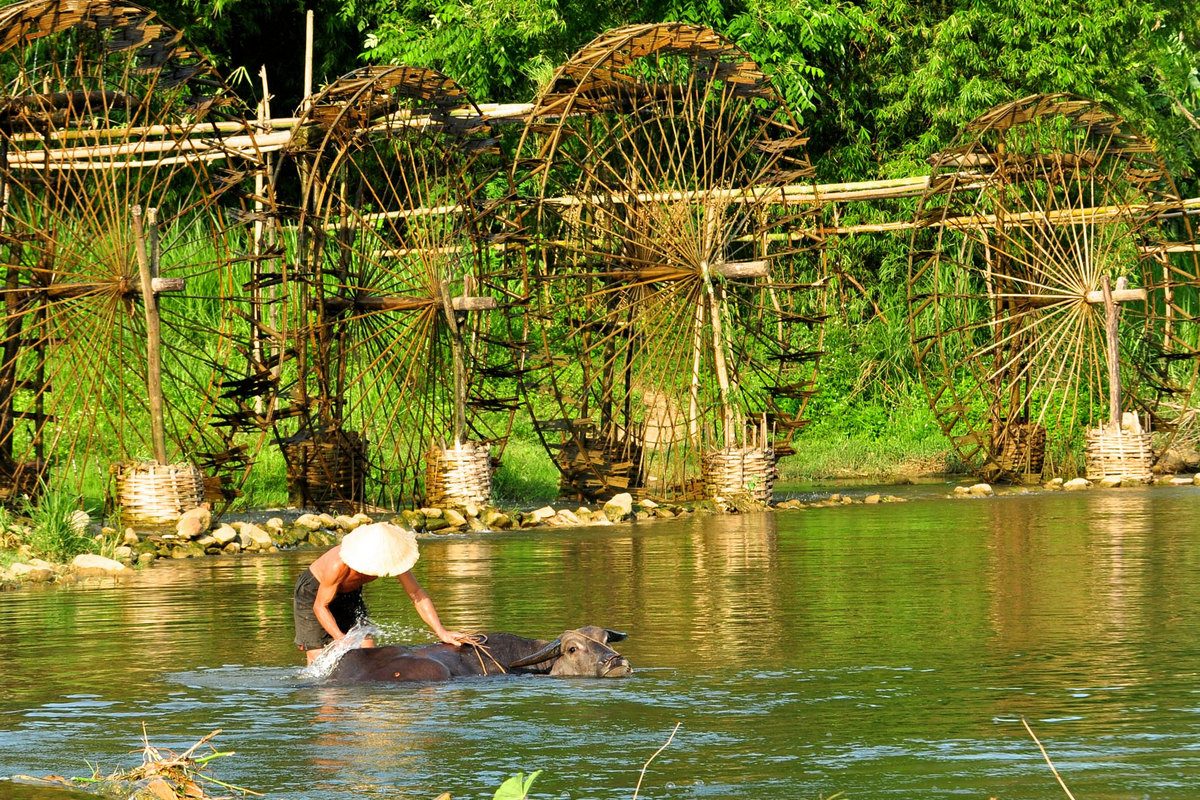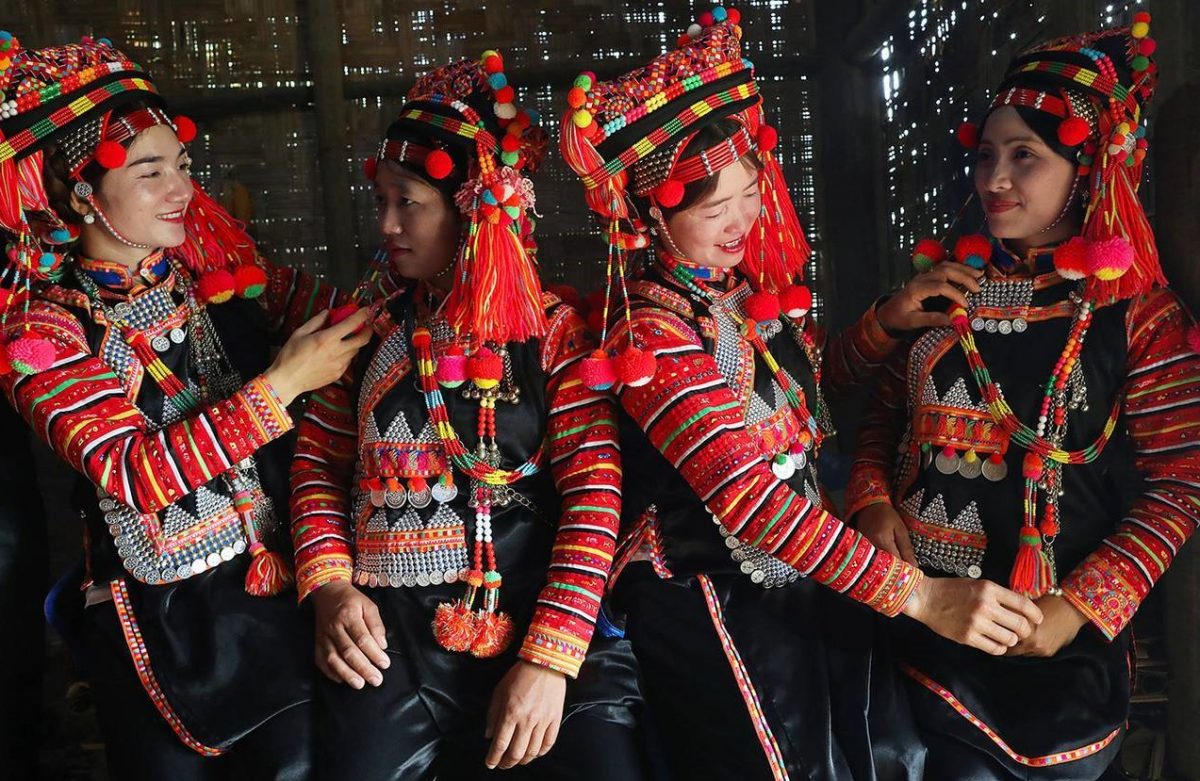Cambodia is a charming country in Southeast Asia. Come to Cambodia, you can discover a Unique cultural. From the jungle-filled Angkor complex to the majestic Royal Palace in Phnom Penh. Include in your tours a visit the UNESCO World Heritage sites of The Angkor Wat Complex. You will discover hundreds of ruins and history, hidden deep in the jungle and telling stories about the past. And tragedy in Phnom Penh capital at the Killing Fields, as well as many beautiful palaces, along with the aesthetic beauty of the Tonle Sap Lake. Relaxing on island of Koh Rong Samloem with nice bungalow in unspoiled beaches where you will have time for relaxing. CambodiaTravel Guide will offer you everything you need to know before travelling to Cambodia.
Kingdom of Cambodia
Population: over 15 million
Capital City: Phnom Penh (Pop: 2 million)
People: Khmers (90%)
Language: Khmer
Currency: Riel and US dollars
Time Zone: GMT +7 Hours
International Dialing Code: +855
HISTORY
The Kingdom of Funan covered much of present-day Cambodia from the 1st to the 6th century, to be replaced by the even more powerful Kingdom of Angkor in the 8th century. The legacy of this era is what draws most visitors to Cambodia; from the 9th to the 13th centuries Angkor’s rulers presided over the construction of one of the most astonishing architectural achievements in the world. While more than 100 temples remain, these magnificent structures are but a mere shadow of the fabulous religious capital that once stood here. Hundreds of wooden palaces, houses and public buildings are long gone.
In 1864 the French added Cambodia to their colonies in Indochina. Independence was declared in 1953. In 1969 the war in neighboring Vietnam spilled over into Cambodia, and on April 17th, 1975, a Cambodian resistance group, the Khmer Rouge, took control of the capital, and proceeded to implement one of the most destructive campaigns of social re-engineering ever recorded. As the Khmer Rouge wished to create a peasant-led, agrarian cooperative, Cambodia’s cities were forcibly emptied and people were resettled in rural labor camps. Anyone with foreign ties or education was liable to be executed. By the time Vietnam invaded Cambodia in 1978 and overthrew the Khmer Rouge, between one in four and one in six Cambodians were dead.
In the middle of 1993 the United Nations oversaw elections in Cambodia. The Khmer Rouge’s leader, Pol Pot, died of natural causes in April 1998.
CULTURAL
Experiencing different cultures is one of the joys of travelling and it is important that these differences are respected. Cambodia has cultural norms and taboos which we encourage visitors to understand and abide by.
Temple visit etiquette: Foreigners are always welcome in temples. However, it is important that a few simple rules of etiquette are followed:
Dress appropriately and act with the utmost respect when visiting Wats (pagodas) and other religious sites, including the temples of Angkor.
Do not wear shorts or tank tops and make sure your shoulders and knees are covered.
Remove your shoes and hat before going into a vihara (monastery).
If you sit down in front of the dais (the platform on which the Buddha’s are placed), sit with your feet to the side rather than in the lotus position.
Never point your finger or the soles of your feet towards a person or a figure of the Buddha.
A woman may accept something from a monk but should never touch a monk.
Show respectand turn off mobile phones, remove headphones, lower your voice and avoid in appropriate conversation.
Please note: The central tower of Angkor Wat is closed to visitors on Buddhist holidays.
GENERAL INFORMATION
PASSPORT & VISA
A passport with at least six months validity from the date of entry into Cambodia is required. We recommend you make a photocopy of your passport and keep it somewhere separate, or scan your passport and keep the scan in an accessible email account.
A 30 day visa on arrival is granted for many nationals at Phnom Penh International Airport, Siem Reap International Airport, and International Border Checkpoints. A passport sized photo is required to complete the visa.
The Royal Government of Cambodia has also recently approved e-visas. All you have to do is complete the online application form available at the official website, pay by credit card online, and include uploading a recent passport-size photo in JPEG/ PNG format. This e-visa is a single entry visa valid for 30 months from the date of issue for a 30 day stay.
Please note that visa extensions are available at the Immigration Department in Phnom Penh City for a 3 month stay. The Cambodian government is also set to offer an option for a 3-year tourist visa for certain nationalities in the future.
WEATHER
Two monsoons dictate Cambodia’s climate. From November to April, a north-eastern monsoon brings cool air but little rain, while a south-western monsoon, which occurs from May to October, causes heavy winds and rains. During the summer rainy season rains tend to take place in the late afternoons.
Generally speaking, November through June is the dry season and July through October is rainy. The temperature ranges between 27 C (80F) and 23 C (73F). Wear light, airy, covering clothing. The sun can be very intense, so bring a hat, sunglasses and sun block! Consider buying a traditional Khmer scarf (Krama) to keep the sun off your neck. Carry raincoat during the wet season, though you will probably only need it in the afternoon. You should have a mosquito repellent for sunrise and sunset hours. For serious temple exploration, a flashlight and compass come in handy. Sneakers are the best for exploring the ruins. The peak season is from November till March, best time of the year, no rain, not too hot, all activities in town operate, more flights, more bus & boat service.
– Mid-November to February: cool and dry
– March to May: hot and dry
– June to September: hot and wet
– October to early November: cool and wet
Please note: The weather can be unpredictable and it may be a good idea to carry an umbrella or raincoat with you. You can purchase raincoats cheaply from supermarkets and general stores.
CLOTHING
If your trip to Cambodia includes stops at beaches and mountainous areas, you will need clothes for all temperatures. A swimsuit, sunglasses, a hat, t-shirts, shorts that are not too revealing, long trousers, some light-weight, long-sleeved tops and a light jacket that is wind- and-rain-resistant will get you through most trips. If trekking is on your agenda, you will need sturdy footwear—plus lots of socks.
Slip-on shoes or sandals are useful for visits to pagodas or people’s houses, as you’ll save time taking your shoes on and off.
Larger cities like Phnom Penh and Siem Reap offer upscale bars and restaurants, so be sure to pack some clothes and shoes for a nice evening out. Leave your flashy jewelry at home.
CURRENCY
Cambodia’s currency, the Riel, exchanges at a rate of about 4,000 to US$1 US. Dollars are welcome. Credit cards and traveler’s checks are widely accepted in Phnom Penh and Siem Reap.
ATMs are widely available in Phnom Penh, Siem Reap, Battambang and Sihanoukville; they distribute US dollars. There are not many ATMs outside these areas. It is recommended that you always carry cash in small notes with you. These notes should be clean, and free from rips and tears where possible.
Please note while there are many gem shops in Cambodia, we advise against any purchase as the majority of gems are fake. Our guides are not permitted to take our guests to these shops and any purchase is at your own risk.
PHONES & INTERNET SERVICES
Post in Cambodia is routed by air through Bangkok, making the service much more reliable than in the past.
Telephone connections to the rest of the world are widely available but can be expensive.
Internet access is available in most major tourist places such as hotels and restaurants.
TRAFFIC & TRANSPORTATION
Siem Reap and Phnom Penh
Taxis are generally only used to and from the airport, and are at a set price. Tuk-tuk sare used around town and cost approx$1-3per journey in Siem Reap and around $2 – $3 in Phnom Penh. In both cities, short journeys of less than 1km are about $1 and prices tend to increase at night.
Motorbike taxis
Travel by motorbike in Cambodia is not safe and under no circumstances is this sanctioned or recommended by Buffalo Tours. Please note that travel by motorbike is not usually covered by insurance. Please check the fine print of your travel insurance policy to be sure of your cover.
LUGGAGE ALLOWANCE
Cambodian Airlines: 20kg in Economy and Carry-on bags must weigh less than 7 kg and have a size limit of 9 x 14 x 22 inches.
SAFETY TIPS
In general, Cambodia is very safe for travelers. Violent attacks are rare, although theft is a problem. When possible, secure your valuables in the hotel safe. Remember to record your traveler’s check numbers and credit card info—just in case.
Do not leave your wallet or mobile phone in the back pocket of your pants or anywhere else that’s easily reached (like an outer zip-up compartment on a backpack). Be especially vigilant in markets and other crowded places like ports and train stations. Pick-pocketing and purse-snatching are more of a problem in Phnom Penh. Some thieves approach on motorcycles, grab your belongings and race off before you’ve realized what’s happened. If you ride in a cyclo (Pedi cab) do not hold your bag in your lap. Sit on it! Wearing valuable jewelry (especially necklaces that can be easily grabbed) is not advisable.
Use common sense and don’t walk alone after dark. There have been many reports of muggings in Phnom Penh late at night. If confronted by a mugger, do not resist. Siem Reap is much safer. You’re always better off skipping cyclos or motorbike taxis at night; ask your hotel or restaurant to call a reputable taxi firm.
Traffic is chaotic. If you choose to ride a motorcycle or bike, wear a helmet. When crossing the street on foot, move at a slow and steady pace. Fight the urge to weave and run! Walk slowly and traffic will flow around you.
HEALTH
Health and well-being
Please be aware that your health can be at risk in Cambodia due to poor sanitation and lack of proper medical facilities. Rural areas have few, if any, pharmacies and hospitals so make sure you travel with a full supply of any prescribed medicine you take. If you need medical assistance, we recommend Royal Angkor International Hospital in Siem Reap, (t: 063761888) and International SOS Medical & Dental Clinic in Phnom Penh (t: 023216911). Each traveller is responsible for his or her own health. First and foremost, make sure that you have travel insurance for your trip. You should also consult your doctor or local travel clinic for the latest information and advice on travelling to Cambodia before departure.
Please note:If you have a medical condition or allergy which requires particular attention, carry a doctor’s letter with you that describes the nature of the condition and treatment needed. We also recommend you pack a medical kit, including paracetamol and a diarrhoea remedy.
VACCINE
There are many vaccinations needed when travelling to this part of the world. It is important you ensure you have adequate protection against disease. Book an appointment with your doctor or travel clinic, no less than two months before your departure.
TRAVEL INSURANCE (recommended)
The Time Journeys does everything possible to ensure a safe and enjoyable trip. However, travel inevitably involves some unavoidable risk. Travel insurance is a cost effective way of protecting yourself and your equipment should any problems occur such as cancelled trips, delays, medical emergencies, baggage loss or damage. Please also make sure your travel insurance covers all activities planned on your trip so you can enjoy peace of mind during your journey.
PUBLIC HOLIDAYS
There are many religious public holidays in Cambodia. The main one is the Khmer New Year which takes place from 14 to 16 Aprilevery year. The celebrations usually go on for about a week. The second biggest is Pchum Ben. This national holiday was established for Buddhists to pay their respects to deceased relatives. It is also known as Ancestor’s Day, and usually celebrated in September or October.
EVERYTHING YOU NEED TO KNOW ABOUT CAMBODIA

